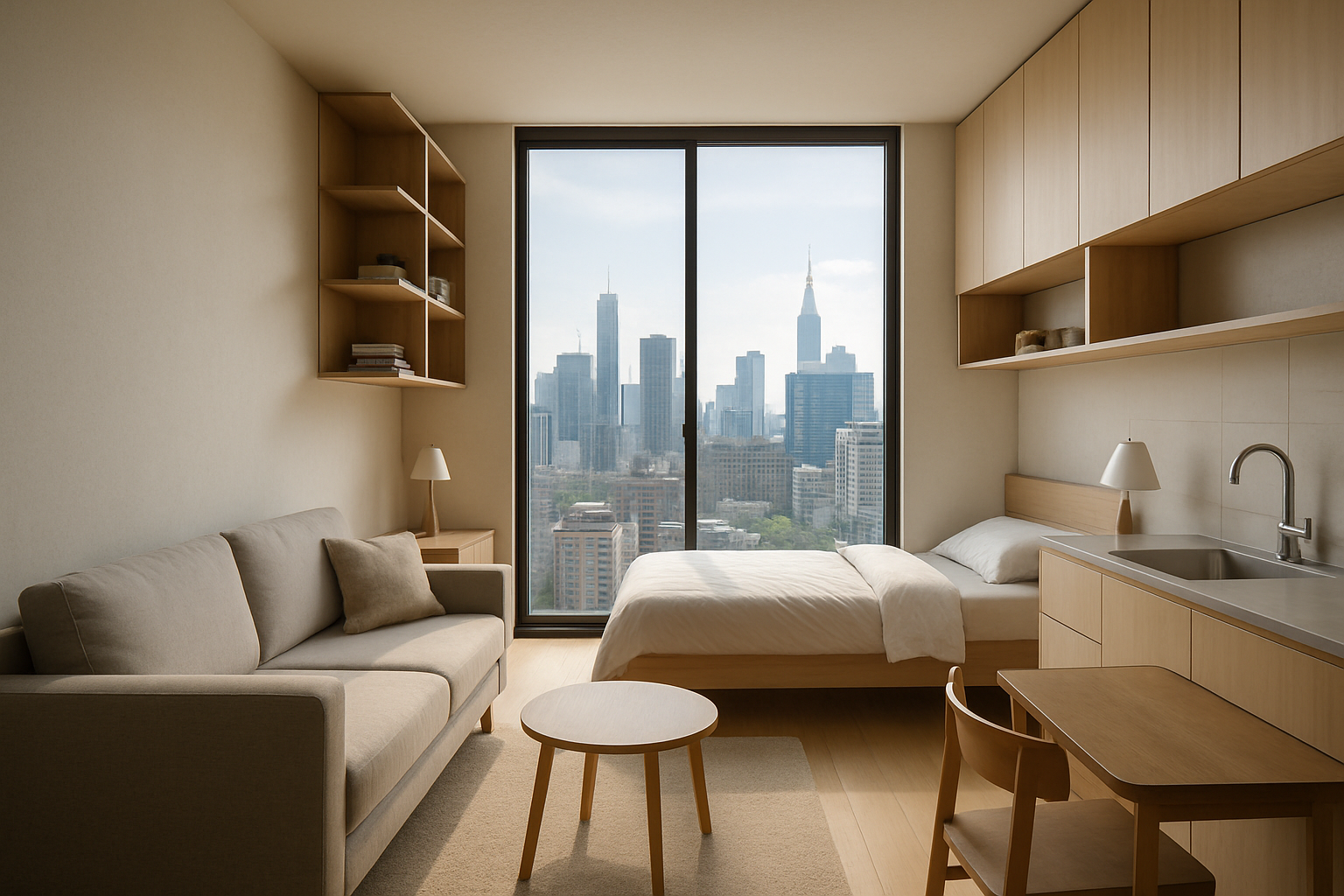Micro-Apartments: The Future of Urban Living?
In a world where city skylines are ever-expanding and urban populations continue to soar, the concept of living spaces is undergoing a radical transformation. Enter the era of micro-apartments, a housing trend that's redefining the way we think about urban dwellings. With average sizes ranging from 200 to 400 square feet, these compact living spaces are challenging traditional notions of what constitutes a home.

The Rise of Micro-Living: A Historical Perspective
The concept of micro-living isn’t entirely new. In densely populated Asian cities like Hong Kong and Tokyo, compact living has been a necessity for decades. However, the modern micro-apartment trend in Western cities can be traced back to the early 2000s, when urban planners and architects began seriously considering alternatives to combat rising housing costs and urban sprawl.
In 2012, New York City launched a pilot program called adAPT NYC, which waived zoning laws to allow for the construction of apartments smaller than the previously mandated minimum of 400 square feet. This initiative sparked a wave of interest in micro-housing across the United States, with cities like Seattle, San Francisco, and Boston following suit.
The Economics of Small Spaces
From an investment standpoint, micro-apartments present an intriguing opportunity. In prime urban locations, these units often command higher per-square-foot rents than their larger counterparts. For developers, this translates to potentially higher returns on investment, especially in areas where land is at a premium.
For renters, micro-apartments offer an affordable entry point into desirable neighborhoods that might otherwise be out of reach. In cities like San Francisco, where the median rent for a one-bedroom apartment hovers around $3,000, a micro-unit might rent for 20-30% less, making it an attractive option for young professionals and students.
Design Innovations: Making the Most of Every Inch
The success of micro-apartments hinges on intelligent design. Architects and interior designers are pushing the boundaries of creativity to maximize functionality in minimal square footage. Multi-purpose furniture, such as beds that transform into desks or dining tables, and Murphy beds that fold into walls, are staples of micro-apartment living.
Storage solutions are equally ingenious, with every nook and cranny utilized. From under-floor compartments to ceiling-high cabinets, these spaces are designed to eliminate clutter and create an illusion of spaciousness. High ceilings and large windows are often employed to enhance the sense of openness, while light color palettes and mirrors further amplify the perception of space.
The Psychological Impact of Micro-Living
While the economic benefits of micro-apartments are clear, the psychological implications of living in such small spaces are still being debated. Some studies suggest that compact living can lead to increased stress and decreased overall well-being. However, proponents argue that well-designed micro-apartments can actually improve quality of life by reducing maintenance responsibilities and encouraging a more minimalist, less materialistic lifestyle.
The key seems to lie in the balance between private and communal spaces. Many successful micro-apartment developments incorporate generous common areas, such as rooftop gardens, co-working spaces, and shared lounges, to offset the limited private space. This approach not only provides residents with additional amenities but also fosters a sense of community often lacking in traditional apartment buildings.
Regulatory Challenges and Urban Planning Implications
As the micro-apartment trend gains momentum, it’s facing regulatory hurdles in many cities. Building codes and zoning laws often have minimum size requirements for residential units, which can impede the development of micro-housing. Cities are grappling with how to update these regulations to accommodate new housing models while ensuring safety and livability standards are met.
From an urban planning perspective, micro-apartments could play a crucial role in addressing housing shortages and reducing urban sprawl. By increasing population density in city centers, they can potentially reduce commute times, decrease car dependency, and revitalize urban neighborhoods. However, critics argue that an overabundance of micro-units could lead to transient communities and put pressure on local infrastructure.
The Future of Micro-Apartments: A Global Perspective
As urbanization continues to accelerate globally, the micro-apartment trend is likely to spread beyond major metropolitan areas. In emerging markets, where rapid urban growth is outpacing housing development, micro-units could offer a scalable solution to accommodate burgeoning populations.
Technology will undoubtedly play a significant role in the evolution of micro-apartments. Smart home systems that allow for voice-controlled lighting, temperature, and appliances can make these small spaces more efficient and comfortable. Virtual reality and augmented reality technologies might also be employed to create the illusion of larger spaces or changeable environments within the confines of a micro-unit.
The COVID-19 pandemic has raised questions about the viability of ultra-dense living arrangements, potentially impacting the micro-apartment market. However, as remote work becomes more prevalent, there may be increased demand for affordable urban housing options that prioritize private space over square footage.
In conclusion, micro-apartments represent a bold reimagining of urban living for the 21st century. While they are not without challenges, their potential to address housing affordability, urban density, and sustainability issues makes them a trend worth watching. As cities continue to evolve, these tiny spaces may well play an outsized role in shaping the future of our urban landscapes.





